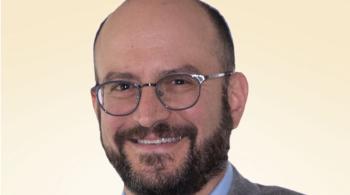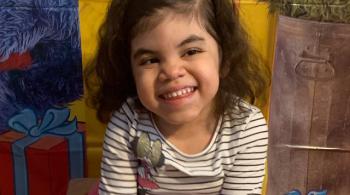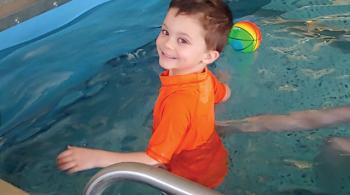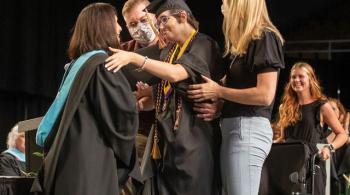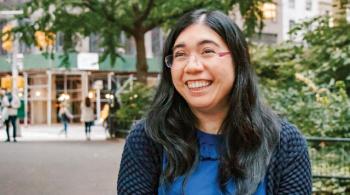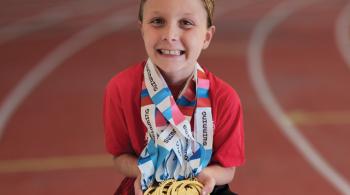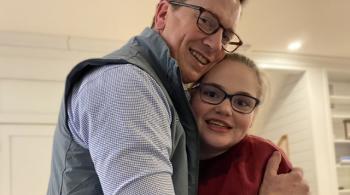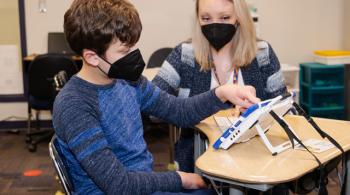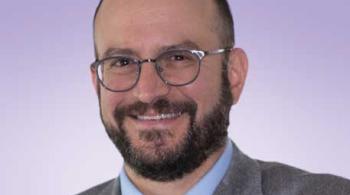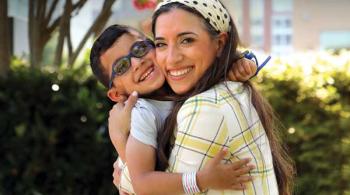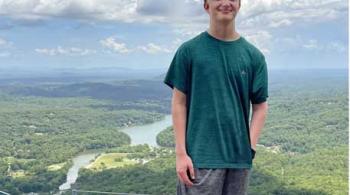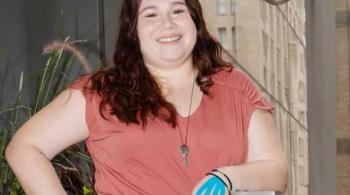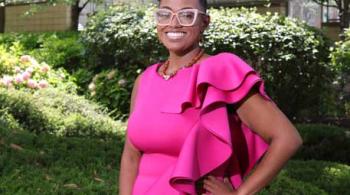By Christianna McCausland and Laura Thornton
Imagine that it’s sometime in the future, and a child is being diagnosed with autism spectrum disorder, also known as ASD. A doctor samples the child’s DNA and sends the results to a laboratory. Within days, the child’s doctor knows not only which of the child’s genes have ASD-related mutations, but also where the “on-off” switches for those mutations are. The doctor prescribes a treatment to fix the mutations, and the child develops neurotypically.
It may sound far-fetched, but it could be possible, someday. To get there, doctors and research scientists need to know a lot more about ASD-related mutations than they currently do. There’s a large absence of genetic data on ASD.
Dr. Jonathan Pevsner is determined to help fix that. A researcher at Kennedy Krieger Institute’s department of neurology, he recently published a massive bioinformatics study crunching previously collected DNA data on close to 10,000 people with ASD—including 2,400 children—and their family members, with the help of data analysis software tools that he and his colleagues designed specifically for the task.
In keeping with previous observations, Dr. Pevsner’s study identified thousands of new, or “de novo,” ASD-related mutations. De novo mutations are not found in an individual’s mother or father and are, therefore, of great interest as possible catalysts for disease, Dr. Pevsner explains.
Dr. Pevsner and co-author Donald Freed (then a graduate student working in Dr. Pevsner’s lab) also discovered several hundred so-called “mosaic” ASD-related mutations never before identified. Mosaic mutations occur during a person’s development, either before or after he or she is born. They are neither inherited nor found in every cell in the body—the later the stage of development during which the mutation occurs, the fewer the cells with the mutation.
While the cells of a person with mosaicism are not all exactly alike, those cells nevertheless fit perfectly together to form a person—just like the many-colored tiles of a Roman mosaic comprise a picture. Mosaicism could explain, Dr. Pevsner says, why in some sets of identical twins, one twin has ASD while the other does not.
Naturally, “finding these mosaic mutations,” Dr. Pevsner says, “is like looking for a needle in a million haystacks.” So far, he’s searched only blood-based DNA samples. Brain-based DNA samples, he says, could yield even more mutations.
Mosaicism also causes Sturge-Weber syndrome, Dr. Pevsner and his colleague Dr. Anne Comi—who directs Kennedy Krieger’s Hunter Nelson Sturge-Weber Center—discovered several years ago. The syndrome often features a large birthmark on the face, and it can cause strokes and seizures. Since that discovery, Kennedy Krieger researchers have been developing treatments for children with the syndrome.
Identifying and finding out more about ASD-related mutations, mosaic and otherwise, can ultimately lead to precision medicine treatments—like the treatments now in development for kids with Sturge-Weber syndrome—designed specifically for kids with ASD.
“To confront autism and make progress, we need to know what we’re dealing with,” Dr. Pevsner says. “Our research helps to make a little more sense out of the big puzzle that is autism.”
To learn more about autism initiatives at Kennedy Krieger, visit Kennedy Krieger's autism website or the Center for Autism and Related Disorders.
Read Dr. Pevsner’s article in “PLOS Genetics” on ASD-related mutations. Read more about his work on mosaicism and brain disease in a "Science" article.

